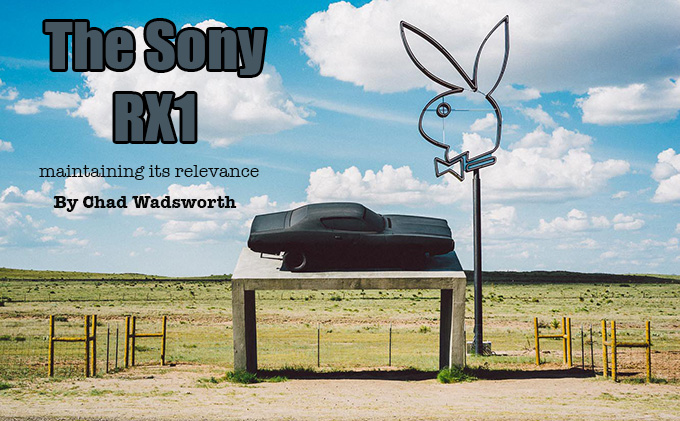
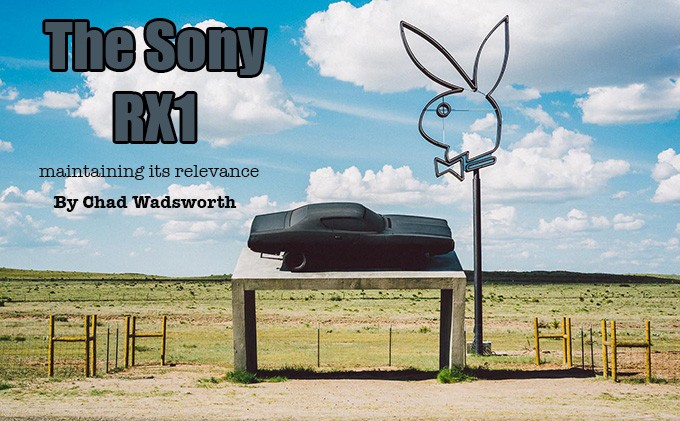
The Sony RX1 maintaining its relevance
By Chad Wadsworth – His website is HERE
Two years can feel like a lifetime in the digital camera market, with fresh faced models seemingly delivered on a frantic six month schedule. But that’s roughly how long my RX1 has been in service – two full years. It was the golden child back then, always with me, consistently impressing with the sweet render of its Zeiss Sonnar 35/2 and the jaw dropping dynamic range from the 24-megapixel sensor. But new interchangeable lens models were released by Sony and the RX1 would often be relegated to the drawer. The newer Alphas boast faster AF, built-it EVFs, higher resolution or better low light performance, and the ability to mount nearly every lens ever made for the format.
Funny thing though, the RX1 still deserves a place in the current stable and an argument can be made that it represents something wholly unique and special that can’t be duplicated by its siblings. It is the camera that I grab when I want to travel, go out with friends or just don’t want to think about lens options. There is a power in simplicity and limiting yourself to a single, classic 35mm lens. I rarely feel restricted with the fixed field of view and find that it is well suited for intimate scenes, landscapes and even portraits.
Given this ongoing admiration for the RX1 I decided to break down what makes the camera relevant today:
The Lens
Like the legendary Hexar AF film compact and its Summicron killer 35/2, the heart of the RX1 is its fixed prime lens with silent leaf shutter. When the RX1 was released, the review sites gushed over the Sonnar that Sony had literally shoehorned into the frame to achieve the compact stature of the camera. With no less than three physical rings – aperture, focus and macro – the all metal Zeiss looks and feels the part of a classic rangefinder optic. Today, that lens is no less sharp, tactile or well built. You won’t find any test charts here but I’ve never been disappointed with the Sonnar’s resolving capability and its lovely rendering of out of focus areas. At times I’ve flirted with switching to the R model with no AA filter for improved resolution but photography isn’t solely about sharpness or resolution and there is a coherence inherent in this lens sensor combo that consistently satisfies.
With a leaf shutter, the lens is nearly silent and allows discrete shooting that lends itself to street, movie stills, sound recording environments or any other application where a silent shutter is a necessity. I often forget about the importance of having this ability until it is required.
The Sonnar does have its minor faults, but unless you are using an Otus, what lens doesn’t? Most notably, there is some CA that will need to be cleaned up on occasion, as well as distortion and vignetting that is magically erased in-camera. I never worry for a second that the lens is somehow hobbled or deficient. I would rate it as one of the finest 35/2 lenses made, equal to the Leica Summicron (king of bokeh), and Hexanon, better than the Minolta AF.
Relevancy today (10/10)
The Body
When released, the RX1 was a clear shot across Leica’s bow. It is considerably smaller than the digital M bodies with a similar level of build quality, yet houses a modern full frame sensor with exceptional capabilities. It truly was the first of its kind and has yet to be eclipsed. You often read words such as “exquisite”, “finest”, “teutonic”, “brick” or “tank” to describe its build and design. Nothing has changed over those two years, in-fact time has proven the validity of those early claims. The detents on all of the metal control dials and rings remain as firm as the day I unboxed the camera. Some mild brassing on the focus ring is the extent of visible wear, although I have encased the camera in a leather half case made by Ulysses in Japan. The camera comes from the factory with a small patch of griptec type material on the front right hand side and a modest thumb grip on the rear. These two features provide just enough surface tension to make single hand holding possible but there are many first or third-party options to improve the ergonomics if desired. The case I purchased provides a nice little leather grip integrated into the design and retains access to the battery and SD card.
Controls are decidedly manual, with the aforementioned aperture ring plus an exposure compensation dial with 3 stops of adjustment +/-. When shooting full manual or shutter priority, shutter speed is assigned to the rear thumb dial. Personally, I prefer this setup to a shutter speed dial on top of the body and find that the combination of physical dials and rings to be ideal for controlling aperture, shutter speed and exposure comp.
The display is perhaps the most contentious component of the design. In an apparent attempt to keep the body as compact as possible, the RX1 was delivered without an OVF, EVF or tilt-screen. You get a nice LCD with good visibility in bright light (on the Sunny Weather setting) but that’s it. Many refused to purchase a camera where you are required to use the stinky diaper technique of composition. Sony does offer an optional OVF or EVF solution but both are pricey and alter the compact form factor of the camera. Personally, I chose to purchase the EVF and find it to be an effective add-on that not only allows for eye-level viewing, but with its articulating eyepiece, you get a right-angle finder, rendering you less intrusive to subjects on the street.
It is remarkable to think that in many ways this CyberShot branded camera remains Sony’s finest design. I know I’m not alone in hoping that a new model will eventually be introduced that retains the same level of build quality along with the retro rangefinder aesthetic and maybe a few improvements. If not for the lack of a built-in viewfinder I would rate the body a 10/10 today.
Relevancy today (9/10)
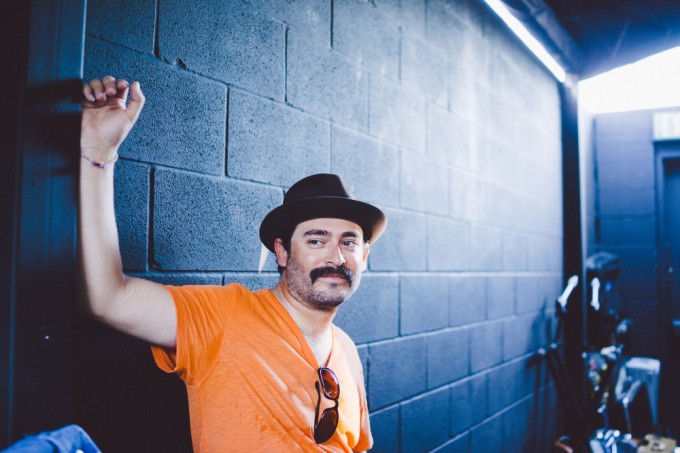


The Sensor
As of the the date of this article, the RX1 sensor is the second highest rated in a Sony body, higher than any Canon camera and higher than any Medium Format system sensor – per DXO ratings. Pretty impressive for a two year old model. With 14.3 stops of dynamic range (widest range of all the Sony cameras), the ability of the sensor to hold highlights and recover shadows is truly astounding. I routinely overexpose when shooting in daylight at f/2, 1/2000 and have no trouble pulling back the highlights. High ISO performance is excellent and as a concert shooter, I have no qualms about using 3200 or even 6400 in a pinch. I rarely rely on software noise reduction as I find the noise pattern to be acceptable and even attractive in a film grain sense. Compared to the sensor in my newish a7II, I feel the RX1 sensor to be absolutely equal if not slightly advanced.
Relevancy today (10/10)
User Interface
All new alpha cameras use an updated version of the RX1’s interface. Comparing those new menus to the RX1 can be a bit of a letdown. The RX1 menus are spartan and lack many helpful features found in the more recent models. One example is the inability to assign a function to the rear control ring – on the a7 models I keep ISO programmed to the ring for immediate control. On the RX1 you must program a custom button to first access ISO and then select the desired setting from the menu. There is potential for significant interface improvement so it is disappointing that firmware has not been upgraded to better synch the interface design with the current models.
Relevancy today (6/10)




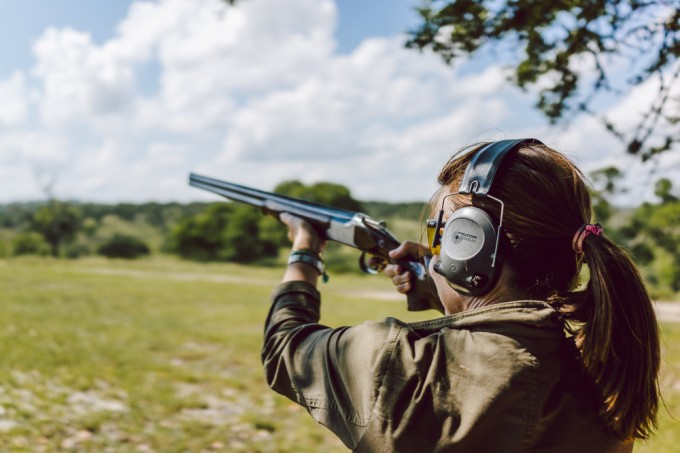

Processor
Along with Interface, this section is where the RX1 most shows its age. Autofocus performance has been greatly improved in the newer alpha cameras so living with the older contrast detection system in the RX1 can at times be frustrating. On the upside, AF is generally very accurate, more so than my DSLRs ever were, it just takes the camera a bit longer to get there. Things are generally fine in good light but the hunting begins when the light goes down or in strong backlight conditions. Switching over to manual focus is always an option but the fly-by-wire mechanism requires its own form of patience and skill. Still, to put things in perspective, I have used the RX1 in extreme concert lighting conditions with solid success, just don’t expect it to provide the speed of today’s advanced systems.
Relevancy today (6/10)

A True Classic?
Given the frequency of product advancement in the mirrorless space, a photographer needs to be at peace with their purchase decision. Many agonize over the right time to buy or upgrade, scanning the rumor sites for hints at what is coming next. This cycle of advancement and obsolescence can paralyze or infuriate. With a camera like the RX1 I knew when I purchased it that there would be improvements in later models, specifically to the AF speed and interface. The question I had to ask myself was whether the things that made the camera unique were enough to warrant the considerable cost of the RX1. I did not buy the camera back in 2013 for the AF performance or the interface/menu controls, I bought it for the lens, sensor and body design/build and of course for its compact form. On its introduction the RX1 was the smallest full frame camera you could buy and two years later, continues to hold that title. Sony didn’t just make the smallest full frame camera in the world, they blessed it with arguably one of the finest sensor and lens combinations available and they wrapped it in a beautiful metal retro shell with manual aperture and exposure compensation controls. Due to its compact size and its handsome design – I’ll admit a bit of vanity here, I want to carry the camera with me all the time, confident that I am not compromising anything when it comes to the images it will help me produce.
Tomorrow Sony may announce a replacement with a faster lens, better AF and interface, maybe even an integrated EVF, but when it comes to the quality of the images, we are reaching a point of diminishing returns. What the RX1 produces today is without doubt at the top end of the spectrum, so good that I seriously worry whether a new model would “mess with success”.
Sony achieved a rarity when they designed the RX1 – they produced a camera that many will claim has already reached cult status, which in the throwaway and upgrade world of digital cameras, ensures its relevancy for many years.
Leave a comment below if you still own an RX1 or would like to.


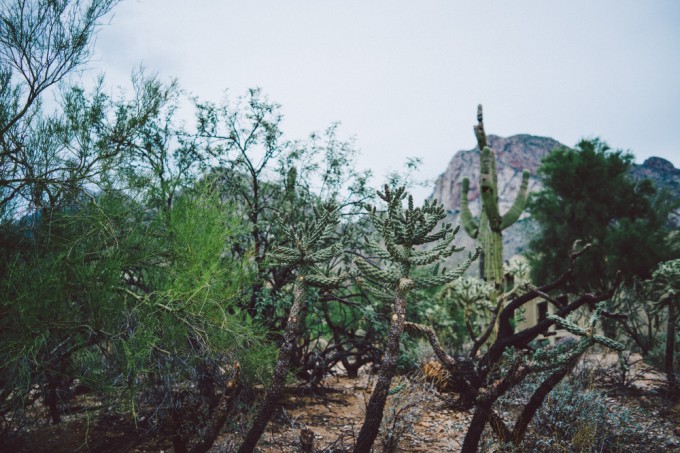



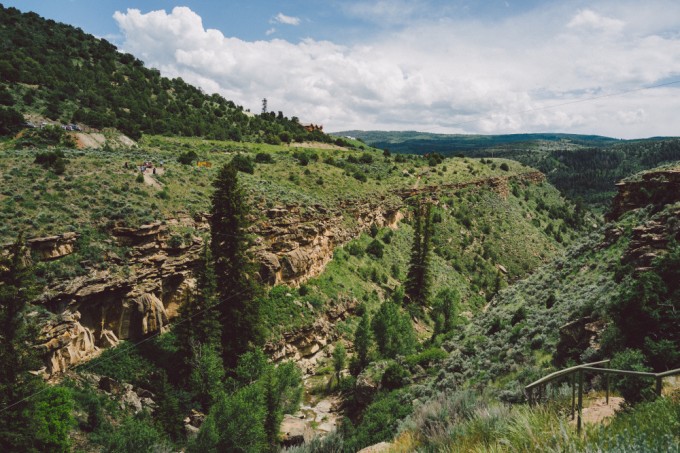


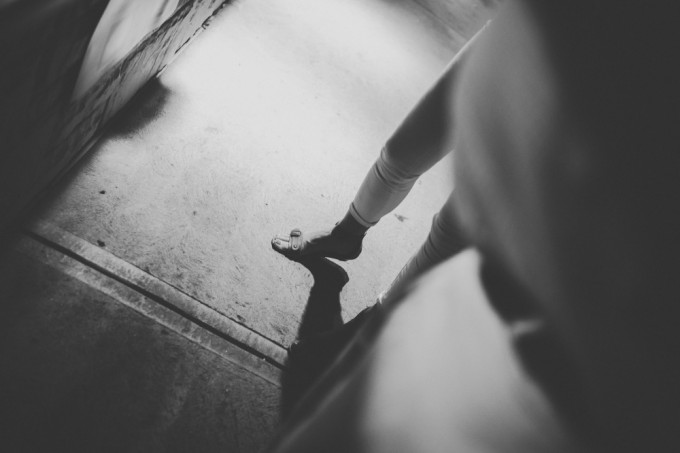
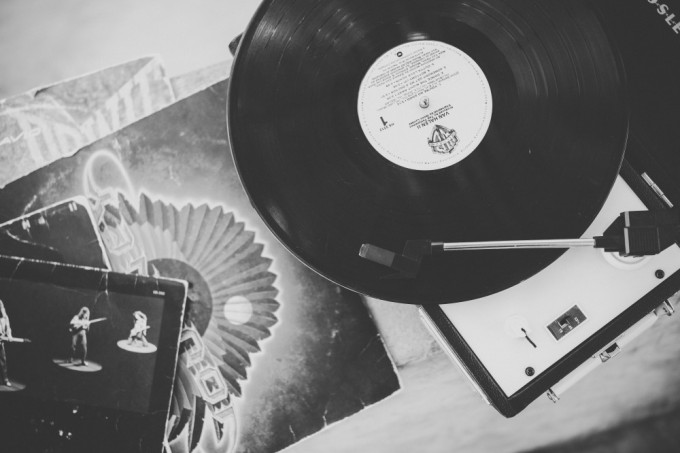

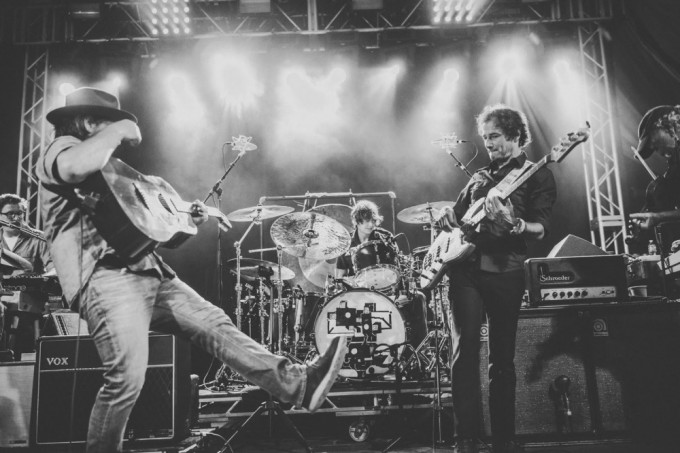

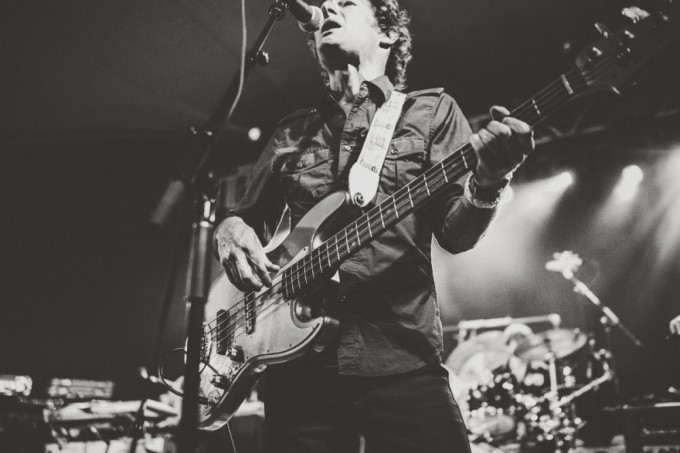

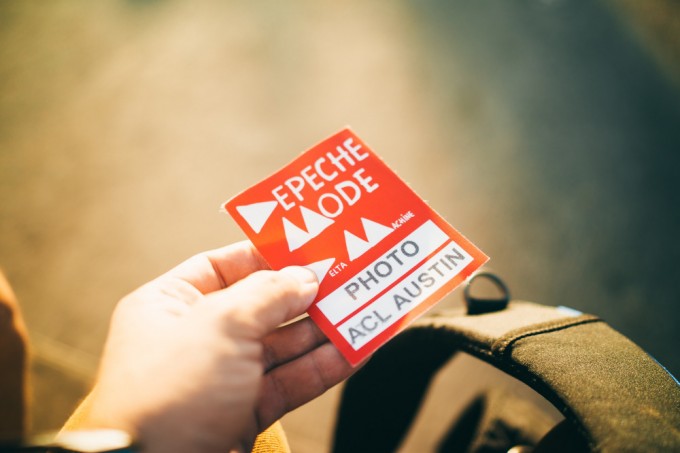





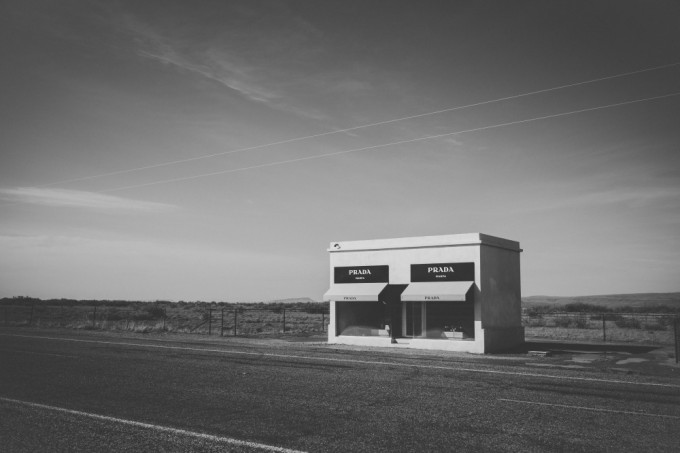
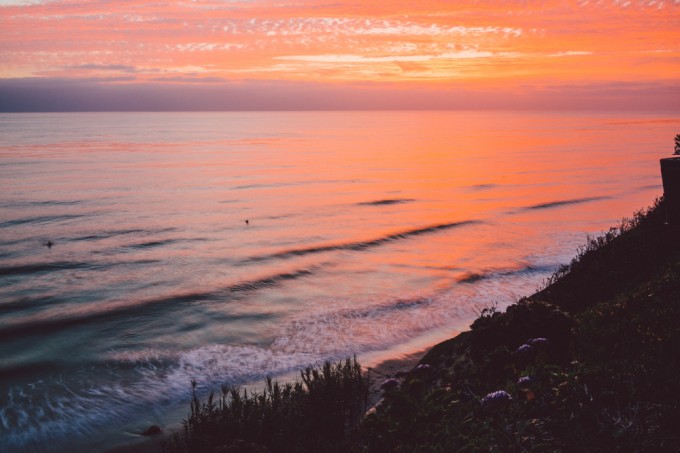
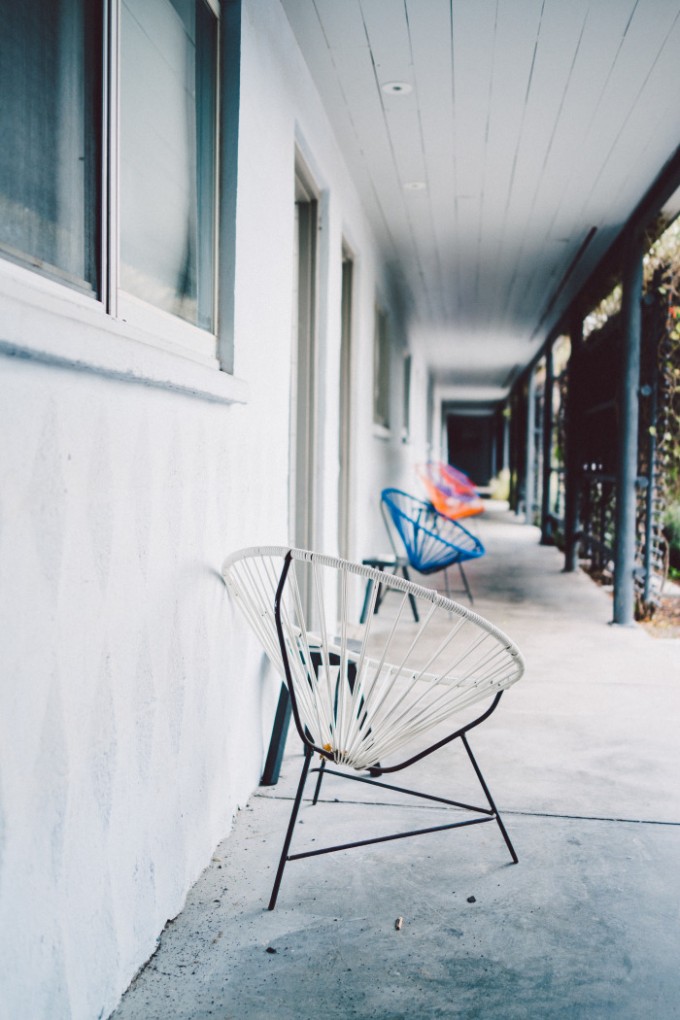





It’s 2023 and I just put an rx1 for $600 Australian from an second hand goods store and I gotta say I am so happy with it. Im never in any rush to take a snap and just really enjoy walking around with the rx1 and taking photos of whatever I think looks cool. No hurry and and mostly always still subjects so have not been bothered by slower autofocus. I also had an x100 original so I’m used to the sub par af.
I can’t get over the fact that it’s full frame!! It’s just so effing cool to be able to carry a full frame around like that. It’s also wonderful to hold as of weight and quality.
I was looking at a lot of different smallish cameras however used prices are just soaring and thought I could never beat what I’m gonna get.out if the rx1 for the price I paid.
Looking forward to hopefully many years of strolling around Melbourne with it.
I’ve owned the RX1r since it came out. When the RX1r mk2 was introduced I thought that would be an improvement. I bought it and sold my old one but I was a bit eager! The battery life on the later model was appaling and I wasn’t convinced the image quality was better (larger files / prints, but IQ about the same). I actually sent it back and bought the RX1 (non-r) again! It is such a good camera which is so nice to use. Yes, it has it’s faults, many of which could be improved with a firmware update (that never happened), but every camera I’ve owned has had it’s own issues. The RX1 seems to transend it’s gripes. It just produces very fine files and in a tiny camera. I can’t see me selling it (again).
I have used my RX1 for two years and have taken marvelous hi quality photographs with it. It’s clarity, compactness and manual control is superb and I carry it in a small leather bag with my ND filters and shutter cable release. One thing I love is the ability to do high sync flash photography with it’s built in flash. Have gotten incredible results with this. Blows my Canon 5D out of the water.
Hi speed shutter sync f2.0 1/2000 sec with on camera flash… At Venetian Carnevale against a relatively bright sky…. http://www.marcsafran.com/ModelPortraits/Venice-Models/i-SGnfLFN/A
I have had my RX-1 for just over a year, picked it up used and have never looked back, I have been a M shooter since 1971, to me it’s a Leica. Love the pictures I get with this camera, no light, low light they just work.
wbill
Nice article and couldn’t agree more with it. Have one since one year to accompany my Fuji X-E1 and it is by far the best camera I’ve ever owned. I really do not see how I could ever want a better one in terms of pure IQ and incredible dynamic range. Quibbles and quirks? Of course it has some, but what camera hasn’t? A “definitive” firmware update could solve many, but guess that Sony will never invest resources in it..
I just bought one, actually i change my A7+35mm to RX1 and have no regrets! The camera is awesome!
Your postprocessing is amazing! Can you share some presets for ACR/Lightroom if it is possible?
fine photos, nice words, gorgeous camera!
thanks for sharing!
Even though it’s been out for a long circle..quality never gets out of date or?
I have not been disappointed so far and it goes well together with sigma quattro…(for comparison see my site…https://photodefacto.wordpress.com/gridpage/
Wonderful images. I really hate to read articles about this camera – it makes me want one! The sad thing is, as someone mentioned above, the short cycle of the cameras. Less than a year passes and “new and improved” come out from all the manufacturers. This camera is a marvelous piece of technology – and speed, which everyone speaks of (and sells their cameras off in the quest of more of that speed) can be a highly overrated quality, particularly if you are skilled shooter with the camera you have, which is another bonus when you hang onto your camera and really learn its ins and outs.
RX1 has been out for about 3 years now…long cycle.
Thank you. I have an RX1r too. I really like the way you process your images. Which software and filters did you use?
great post, love everything about this camera. there is no reason for sony’s short product cycles…. make a good camera and then give it time to mature and then come out with something new.
I always find heavy use of filters masks examining the quality of a particular camera/lens combination for the purpose of review. The moment filters are applied, then the picture may as well have been taken with an iPhone, as it affects tone, dof, noise and dynamic range. For the purpose of showing how good a camera is, I don’t think filters is the way to go.
Dear John (sorry, I had to)
Every film ever produced; b/w, slide, print, motion picture – they were all filters on reality. Even our own vision is a filter as we all view color (some not so well) differently. So the concept of a perfect representation of a moment, as filtered through the camera’s sensor and the lens bores me and my clients. Everyone has different taste and you are welcome to yours John but
Sorry, got cut off there,
I meant to finish the though by simply saying that just because a camera or lens is “good” we don’t need to refrain from making images our own.
Finally, the whole, could have been shot with an iPhone is simply false, the processing I use does nothing to degrade shallow depth of field effects, or change the base characteristics of how the lens draws.
Apologies if the post came across a bit “offish”..filters are indeed great, I also use them and your use of filters indeed adds to the feel of the image above. But for a pure review of seeing what a camera/lens is capable of, filters hide any thing that could potentially make a person chose one camera/lens over another due to the rendering etc. I just feel to show what a camera can do, post processing should be kept to a minimum…but to show how creative as an artist/photographer you are, filters are great.
The article is well written, but from my part it can be summarized with the phrase “A camera is still relevant if it has all the characteristics needed to allow you to take the pictures that you want, in the way you want”. So no need whatsoever to buy a newer camera!
Go on with the good job and don’t mind the sales pitch 🙂
I bought an RX-1 when it was first released, after not having owned a decent camera in many years. It’s still with me today as my only camera, and this article totally reflects my feelings about the RX-1. I even have come to love the EVF. It’s ability to swivel lets you explore some unusual angles that are much harder to pull off with a fixed view finder. Some folks are excited about the Leica Q announcement, but I don’t see much advancement in that camera over my trusty RX-1.
Love the article, love the images, and I couldn’t agree more!
There are some superb photos here. My favourite is the one of the three girls at the concert.
A camera like this is far superior to any DSLR with a 35mm lens, except if you really, really want top-notch AF. I dare say that if all I wanted was a digital Leica with a 35mm lens, I think I’d prefer the Sony. The only exception would be the M9 with its wonderful CCD – although it has two stops less DR, and DR is a good thing to have.
“stinky diaper technique of composition”
I love it! Such a perfect description. Add the squint of discomfort from looking into the sun and the effect is complete. 😛
“Due to its compact size and its handsome design – I’ll admit a bit of vanity here, I want to carry the camera with me all the time, confident that I am not compromising anything when it comes to the images it will help me produce.”
Not vain at all. If a camera does not make you want to take it with you, it is a design failure. Simple as that. Of course, if you have a job to do, you take what you have and just do what you can with it.
I admit that I don’t like the post-processing you’ve applied, but that does not take away at all from the high standard that you’ve shown in a few of these images.
Your review has made me wish that I could use the RX1 for my work. However, all the work I get, such as it is, needs longer focal lengths. I suppose if I ever get to do some photojournalism, the RX1 could be just the ticket. 🙂
Karim,
Glad you like the post, even if the processing isn’t to your taste. I can’t take credit for the “stinky diaper technique” as I first heard that from another local Austin Photographer, Kirk Tuck.
The most of my street photos where made with the Sony RX-1. http://www.streetfoto.ch
Still using mine everyday for two yrs now. I gave it to maintenance three times. Twice for censor oil like dot… And the latest after 1 yr 1/2 for changing all shutter board ( more than 100$ in Singapore Sony).
My expectations for a next iteration would be of course faster AF for my street photo, weather sealed ( I live in Vietnam and travel a lot in south asia) and why not dreaming about a 35mm 1.4 and high iso like A7s. Sometime I would have some funny software tricks inside ( time lapse, multiple exposure, i don t need fake B&W, etc) and why not wifi or firmware update for adding functions…
ANW RX1 is very special item for me,this is first time I don t feel the need to buy something else every 6 months, this for sure a classic.
A killer combo with Lightroom
The RX-1 is one of the few mirrorless cameras I have not owned; the main reason is the last of a built-in EVF. I am making do (happily) with a Fiji X-100s in the meantime. Clip-on finders just don’t work when pulling a camera out of a small bag (something I do with the X-100s many times a day). And the reason I go with the Fuji is for many of the same reasons Chad loves the RX-1: leaf shutter and 35mm EFOV lens. For my present work, a silent shutter is a must, not an option. I am waiting for the RX-2, with high hopes. Great review, and (clearly from the images) this camera is as relevant now as when it was released.
Hands down the best camera I have owned, it might not be perfect but every time I take it out on a trip I just marvel at how good it makes my photos look 🙂
If they ever release an RX2 they don’t need to touch the image quality, just speed up the AF, improve the interface a bit and maybe add the viewfinder from the RX100mk3. Even with those quibbles, the RX1 is a classic, a bit like the first iPhone, it will be improved on I am sure but it was a real statement that still holds up very well.
Great article! I’ve owed mine since the beginning too. I’ve travelled all over with it and am always amazed with what it can do. I have a D800e too and my little RX1 holds its own, in my hands. The only issue in my mind is the short battery life; easily addressed with a few spares in the pocket. As Rick mentioned above, I will never sell this one.
Great article! Great job on the write up and even more on the images. You truly master your tool!
Thank you sir!
Sony, where are your firmware updates for this gorgeous camera?
Don’t be mean.
Still my favorite Sony.
Totally agree. The RX1 is the only full frame camera I own, and likely the only full frame camera I will ever need to own (well I guess never say never 🙂 Unique compactness which is crucial to me, timeless image quality and silent. It doesn’t get any better than this for street photography. If you can ever label any digital camera as a “classic” the RX1 has to be in the discussion.
Aah… I have an RX1R and every time I think of selling it shows me magical pictures… I don’t think I’ll sell this anytime soon. In fact I’m thinking of keeping this as a 35mm on its own and possibly getting an a7 ii with batis 85.
I haven’t noticed any chroma, flare or any negatives. The pictures are velvety smooth and when you do a bit of processing, you get amazing looking pictures. All I have is a clear filter to protect the lens and sometimes I put on that a 3 stop nd filter. Don’t think this needs any hood unless for protection.
I don’t miss an evf though I wonder if I should buy it.
I must admit though that I enjoyed taking pictures more with Fuji x100 but the picture quality with RX is miles ahead.
The question is will I buy this again if I ever lose it. The answer is yes.
What an amazing story. I can’t wait to take my RX1 out of the drawer and shoot it some more.. And what a great timing … The day before Leica will launch its Q model, their version of the RX1. I’m somehow guessing that’s the secret camera that Steve has been shooting for the last week or so….
I’ve owned my RX1 as long as you have and agree with everything you say. I feel that the RX1 was a statement product by Sony, just to show that it could be done. It is and will continue to be a classic and I will never sell mine.
Agree. Will never sell mine. It’s a great camera that needs a minor firmware fix for its autofocus. Shame on Sony. Fuji has added firmware upgrades to improve autofocus for its cameras. Fuji’s 4.0FW for its FT1 improved the focusing on the old the 35mm 1.4 lens that it’s like owning a new lens/camera combo. Proves that it can be done. Amazing that Sony has done nothing for a camera that cost over $3000. Should have provided a firmware upgrade when they released the A7 line. It’s not too late Sony!!!
Good article, Chad. I think we all sometimes lose track of how happy we are with what we have in the flood of newer models. The RX1 always struck me as a wonderful sensor in a slightly lacking (for me) body. At its price point, i would have wanted a VF, even if that required a slightly bigger body. A built in Vf would have completed the classic handling of aperture ring and manual focus. So so tactile. But even with that missing, a full frame in a compact camera with all the IQ benefits? Amazing, really. Great to hear you still love it.
If a camera took great photos 1, 5, 10, 50 years ago, there’s no reason why it shouldn’t take great pics today!
Wonderful stuff.
Love your article. I have an RX1r. Blowing the images up to six feet across the level of detail is mind-blowing. Yes, I wish the focus was faster. It’s not a kid friendly camera. But on landscapes, I’ve yet to see a camera that can match this without going to a bigger format. The fact that it fits in a coat pocket is a miracle.
Love your images.
Sony… how about word on a firmware update? That would be icing on the cake.
Great attitude.
there’s not much better things in the world than a fast Zeiss Sonnar Lens, and I’m also in love with the 35mm frame. It was a great decision from Sony to pull out this camera.
Like you said, we shouldn’t look so much at rumors but for me as someone who has been waiting with a 35mm lens purchase for my A7r due to lack of a faster lens than the FE 35 F2.8 Sonnar, I’m really looking forward to what’s next.
Rumors predict a curved sensor RX camera with even faster F1.8 and probably smaller lens. If they are also able to achieve that kind of body with the little Pop-up EVF from the RX100 this would be my absolute dream camera.
Go Sony!
Could not agree more with the entire write up. 9 months ago I rented a Leica M240 + 35 Summicron for four days, and spent those four days shooting hundreds of duplicate shots with it and my RX1 in varied conditions, thinking that if the Leica gave me better results, I would get one. It didn’t’ and I didn’t.
Yes, the experience of using the Leica viewfinder was nicer than either that somewhat ungainly Sony EVF, or the LCD, but at the end of the day, the focusing “hit” percentage was better with the Sony.
In terms of color, contrast, bokeh, sharpness, general gestalt, after processing the results, there was just nothing about the actual Leica results which was better than the Sony. For me. Some things were not quite as good as has been noted many times elsewhere. Obviously others see things differently, and I respect that.
As much as I enjoyed handling the Leica, I felt that the RX1 was the better camera, at least for that lens comparison.
I’m not diminishing Leica here, I’ve got a Leicaflex SL2, which I love, just trying to point out how great the RX1 actually is.
The RX1 is just a jewel of a thing.
I agree the RX1 and RX1r are better than an M and 35 cron, without question. I did the same tests 😉
Excellent article and wonderful pictures. I have the RX1r and find it to be a completely contemporary camera yet classic in many ways. I would like to see a firmware upgrade with these two features added: 1) When you turn the focus ring to the left it goes to infinity, yet the distance scale shows infinity on the right. A simple software upgrade would reverse the scale to match the direction of focus.
2) Treat the aperture more like an SLR, i.e., no matter what the aperture ring is set at, the aperture is always wide open for critical focus. Then when you release the shutter, the aperture stops down to the chosen f stop.
Otherwise, the camera is a jewel and gives my Leica equipment a real run for the money.
My Rx1 is over two years old, and I never considered buying something else. I am an outdoor guy, so I need something lightweight, compact, simple, sturdy and easy to handle with only one hand. There is just no other camera with these characteristics, that gives such beautiful pictures.
Fast shutter speeds are a real virtue in many outdoor activities. What is called here the ‘stinky diaper technique’ is often the preferred way of shooting when you ride your bicycle or need to secure yourself: No need for a EVF.
Another important quality is the built-in jpeg-conversion which makes post-processing seldom necessary. When travelling, all I have is a smartphone, so out-of-camera jpegs need to be excellent.
I would think of buying a new camera if Sony made a waterproof RX1.
Hi Walter,
Care to share the Creative Style settings (Standard, Vivid, etc.) you use for OOC JPEG settings from the RX1?
Mine: Standard: Contrast -2, Saturation +2, Sharpness 0
Actually, mostly I just use the Standard setting. I did some experiments, but I just love the green tones of the standard setting.
Yeah, that one has a great curve for greens; keep coming back to it. Decreasing contrast & boosting saturation makes it so I seldomely have to adjust my images (I do that exclusively on my iPhone). Thx for your input!